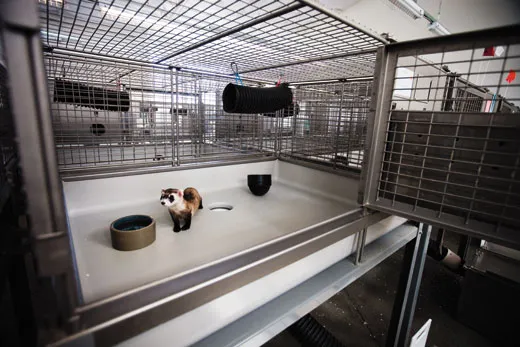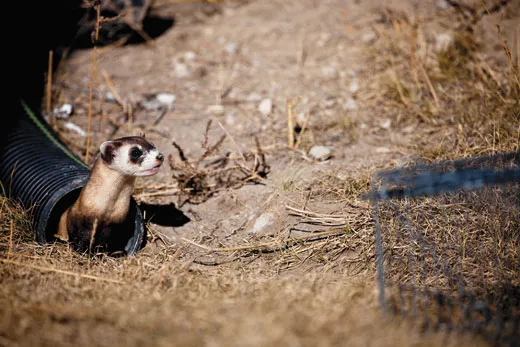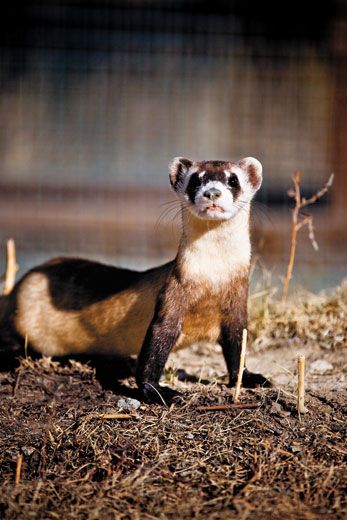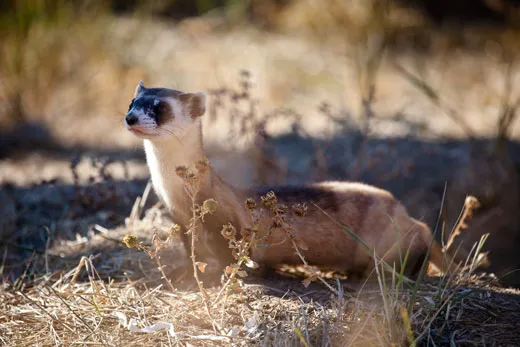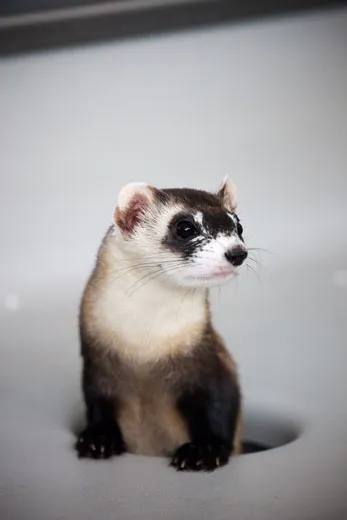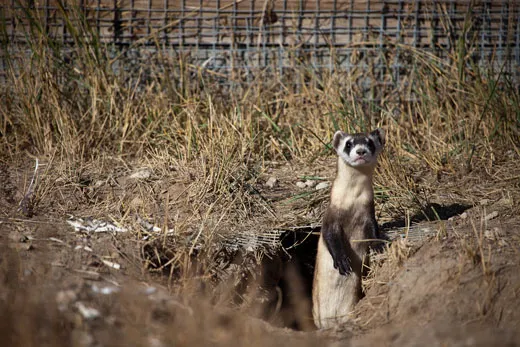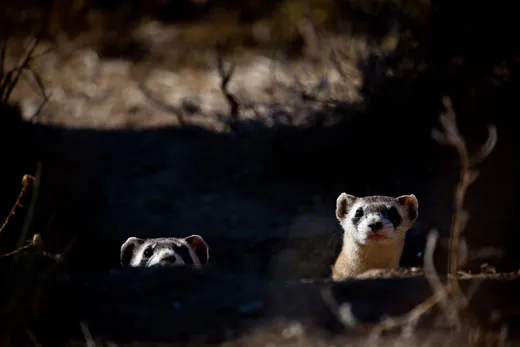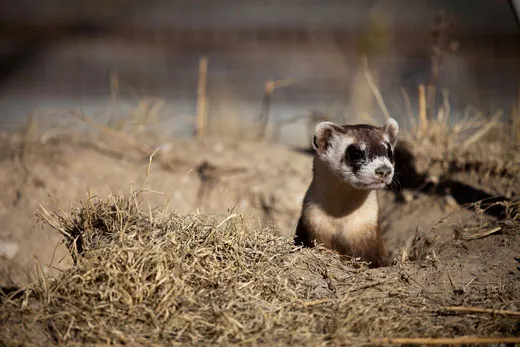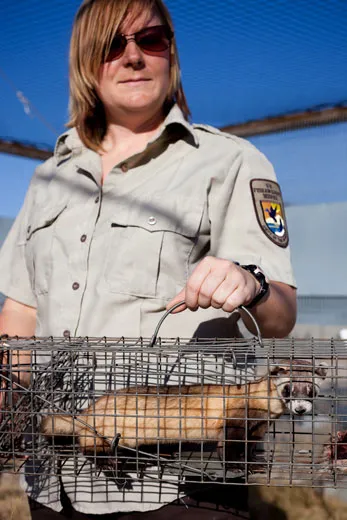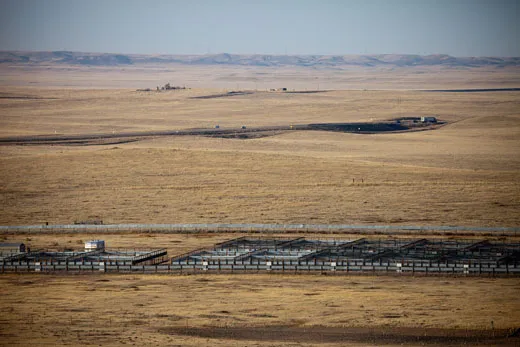Survival Training, Ferret Style
Before the captive animals can go free, they have to hone their killer instinct at a conservation center in Colorado
/https://tf-cmsv2-smithsonianmag-media.s3.amazonaws.com/filer/ATM-Ferrets-tubing-631.jpg)
In an outdoor enclosure, two juvenile black-footed ferrets pounce and somersault, tumbling over each other in a playful fight. The loser breaks free and rushes into a tunnel lined with a plastic tube. The victor tosses its long neck back and forth in a jubilant display of the ferret’s war dance.
These two pen mates at the National Black-Footed Ferret Conservation Center near Carr, Colorado, are members of a species once thought to be extinct. Disease, habitat loss and eradication of the ferrets’ main prey, prairie dogs, nearly wiped out this Great Plains species. Then, in 1981, they were rediscovered in Wyoming. A few years later, the U.S. Fish and Wildlife Service captured all 18 known black-footed ferrets, then arguably the rarest mammals in the world. Today, thanks to breeding programs at the Smithsonian and elsewhere, more than 7,000 ferrets have descended from those 18. Biologists have released 2,600 in eight states, Mexico and Canada; the wild population hovers at about 1,000.
A captive-bred black-footed ferret has the long torso, masked face and furry black feet of its species, but it doesn’t necessarily know how to act like a ferret. That’s why most of the 50 kits born in 2010 at the Smithsonian Conservation Biology Institute (SCBI) in Front Royal, Virginia, will pass through the Colorado center. It’s a sort of halfway house between captivity and reintroduction. Ferrets get their first exposure to the elements, learn to navigate a burrow system (their natural habitation) and take their first crack at hunting prairie dogs. Animals released into the wild fare better if they’ve attended the prep school.
“Knowing that these animals can be produced on a large scale and successfully preconditioned to improve their chances to survive in the wild is 180 degrees from what we were facing in the mid-1980s,” says David Wildt, head of the Center for Species Survival at the SCBI. “Who would’ve thought we’d be seeing that now?”
Ferrets live in the Colorado facility until there’s an opening in one of the 48 outdoor pens, each about the size of a studio apartment. It’s a tough transition, says Paul Marinari of the U.S. Fish and Wildlife Service, manager of the center. “They have to deal with cold and bugs, rain, snow, dust, all things they don’t have to deal with inside.”
It has taken a few tries to get the training right. In the past, researchers swooped down on ferrets with stuffed raptors and sent in “robo-badgers” to boost the ferrets’ ability to defend themselves against common predators. But the most important part, Marinari says, involves live prey: “The more practice ferrets get going after prey, the better they do.”
Inside another enclosure, a lone prairie dog sits in the sun munching on grass, destined to face a hungry black-footed ferret one day. The center receives prairie dogs from around the West that are slated for extermination. Some animal welfare supporters decry the training method, but it boosted ferret survival rates by tenfold in the first nine months of wild living in a 1998 study.
Robyn Bortner, a U.S. Fish and Wildlife technician at the center, carries a couple of wire box traps into the pen where the juvenile ferrets had been tussling. Each trap is baited with a prairie dog head. “It’s like chocolate for ferrets,” says Bortner. “They can’t resist.” She places the traps on the ground and in a matter of minutes, a ferret pokes its head out of a plastic tube. A few sniffs, looks and tentative steps later and the trapdoor clanks shut on one more ferret destined for the great outdoors.
